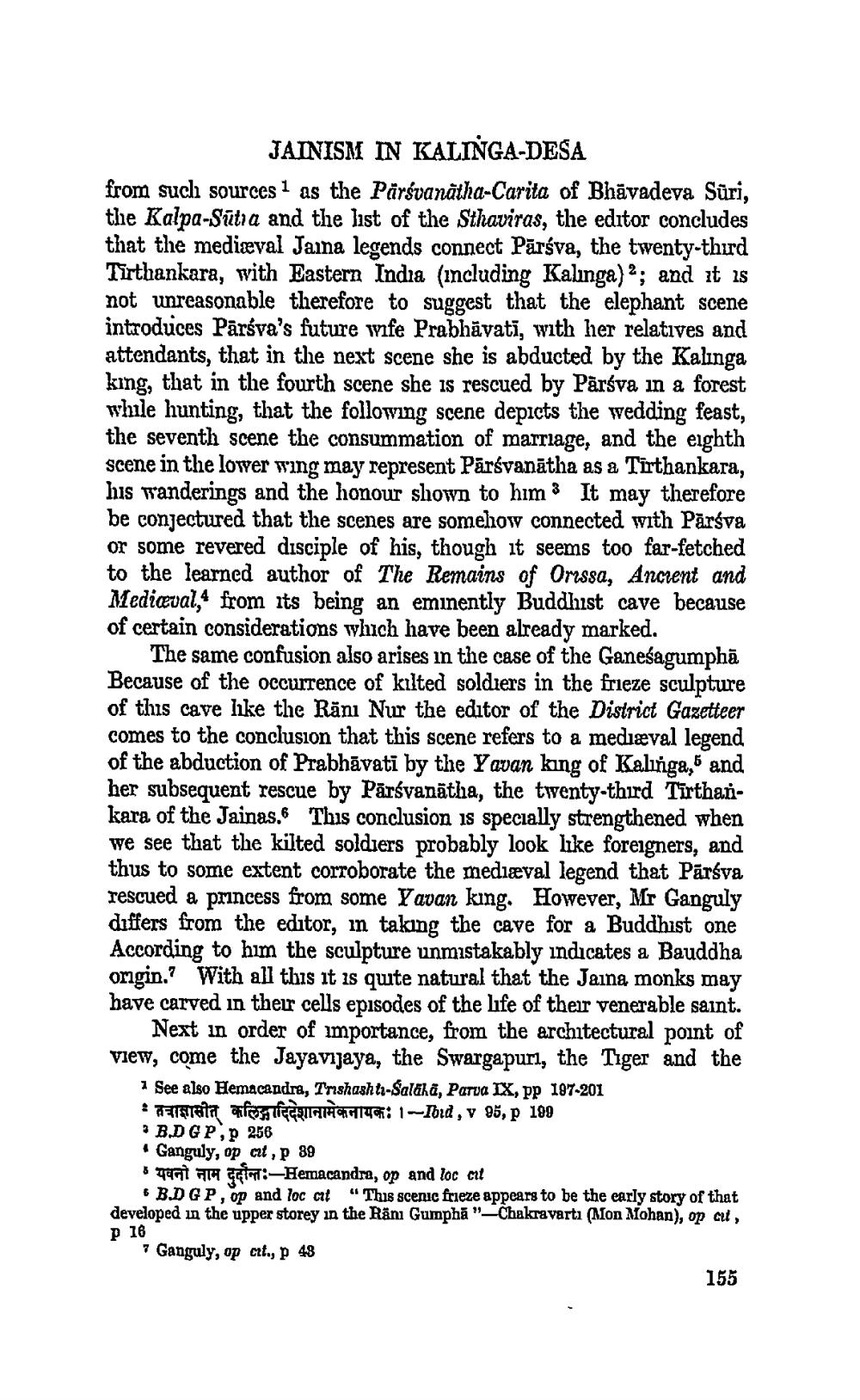________________ JAINISM IN KALINGA-DESA from such sources 1 as the Parsvanatha-Carita of Bhavadeva Suri, the Kalpa-Sutra and the list of the Sthaviras, the editor concludes that the mediaeval Jaina legends connect Parsva, the twenty-third Tirthankara, with Eastern India (including Kalinga)?; and it is not unreasonable therefore to suggest that the elephant scene introduces Parsva's future wife Prabhavati, with her relatives and attendants, that in the next scene she is abducted by the Kalinga king, that in the fourth scene she is rescued by Parsva in a forest while hunting, that the following scene depicts the wedding feast, the seventh scene the consummation of marriage, and the eighth scene in the lower wing may represent Parsvanatha as a Tirthankara, his wanderings and the honour shown to him: It may therefore be conjectured that the scenes are somehow connected with Parsva or some revered disciple of his, though it seems too far-fetched to the learned author of The Remains of Omssa, Ancient and Medieval, from its being an eminently Buddhist cave because of certain considerations which have been already marked. The same confusion also arises in the case of the Ganesagumpha Because of the occurrence of kilted soldiers in the frieze sculpture of this cave hike the Rani Nur the editor of the District Gazetteer comes to the conclusion that this scene refers to a medieval legend of the abduction of Prabhavati by the Yavan king of Kalinga, and her subsequent rescue by Parsvanatha, the twenty-third Tirtharikara of the Jainas. This conclusion is specially strengthened when we see that the kilted soldiers probably look like foreigners, and thus to some extent corroborate the mediaeval legend that Parsva rescued a princess from some Yavan king. However, Mr Ganguly differs from the editor, in taking the cave for a Buddhist one According to him the sculpture unmistakably indicates a Bauddha ongin.? With all this it is quite natural that the Jaina monks may have carved in their cells episodes of the life of their venerable saint. Next in order of importance, from the architectural point of View, come the Jayavijaya, the Swargapuri, the Tiger and the 1 See also Hemacandra, Trishashtz-Salaka, Perua IX, pp 107-201 arsin affGSIGITA146: 1--Iord, v 06, p 109 * B.DGP, 256 Ganguly, op cit, p 89 499 FTH STAT:--Hemacandra, op and loc cut * B.DGP, op and loc at "Thus scenic frieze appears to be the early story of that developed in the upper storey in the Roni Gumpha "-Chakravarti (Non Mohan), op cit, P 16 7 Ganguly, op cit., p 48 155




